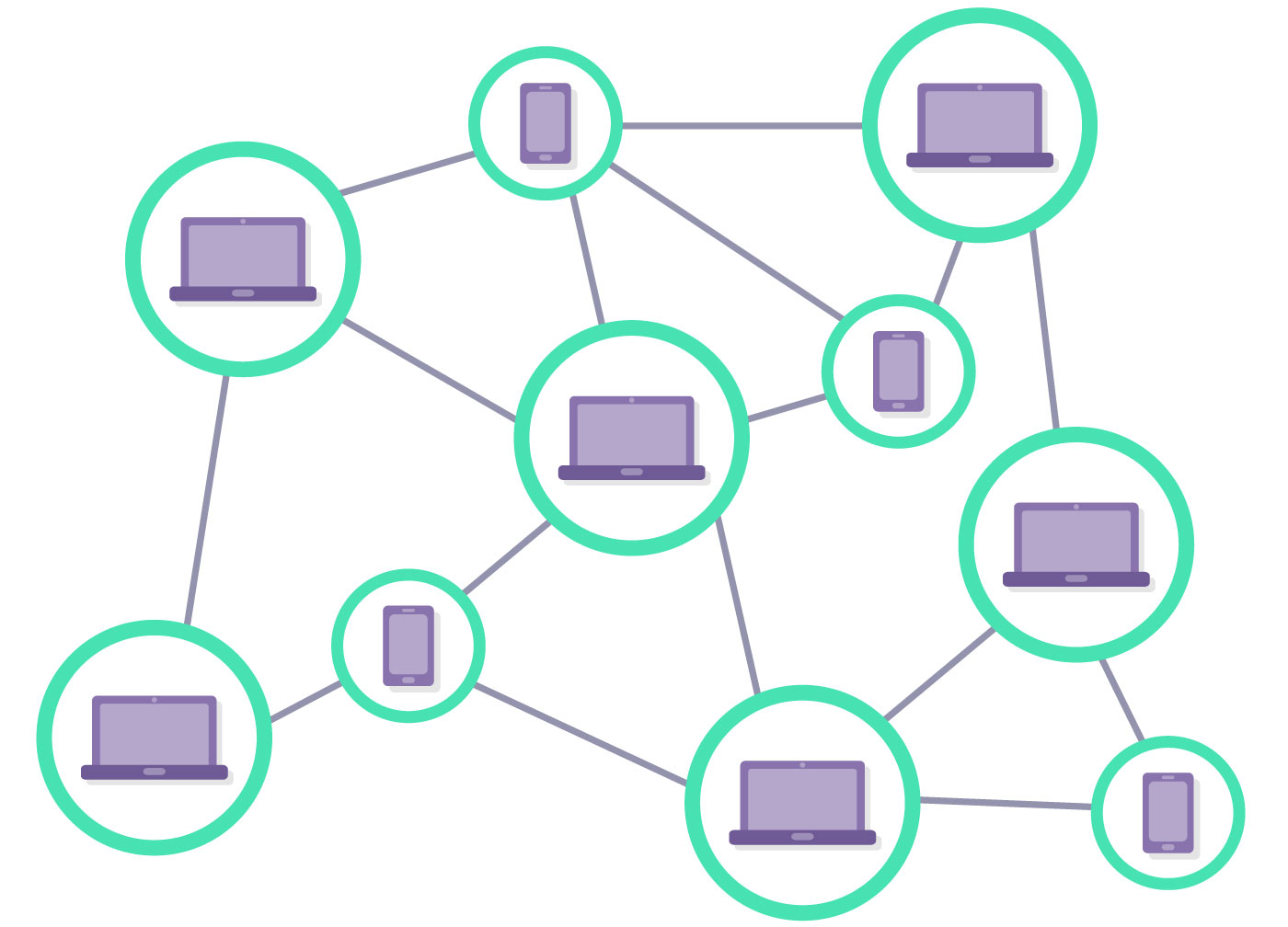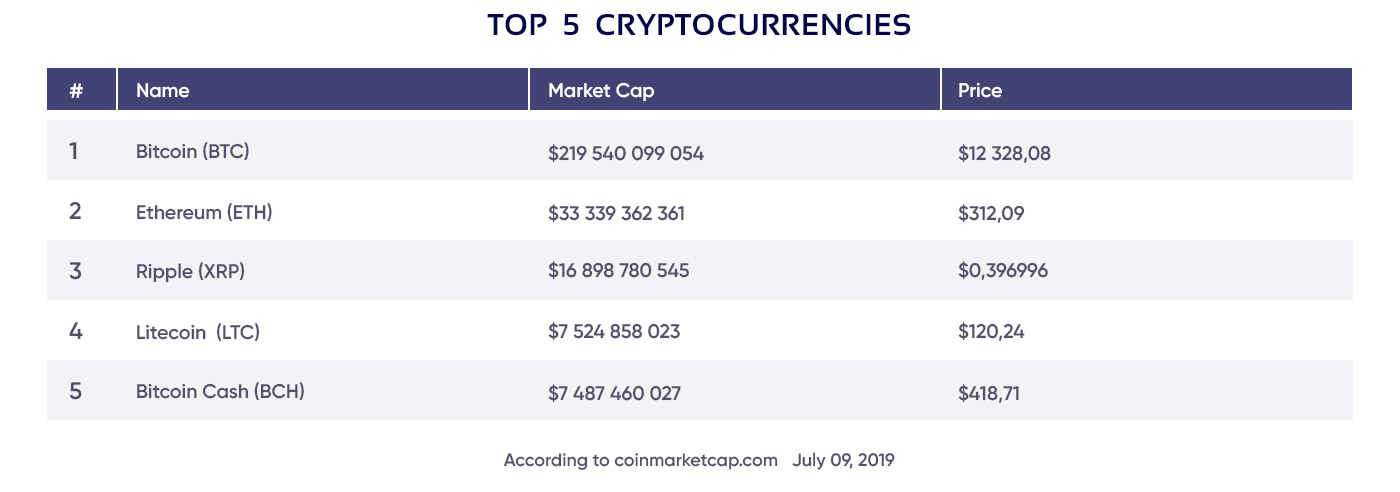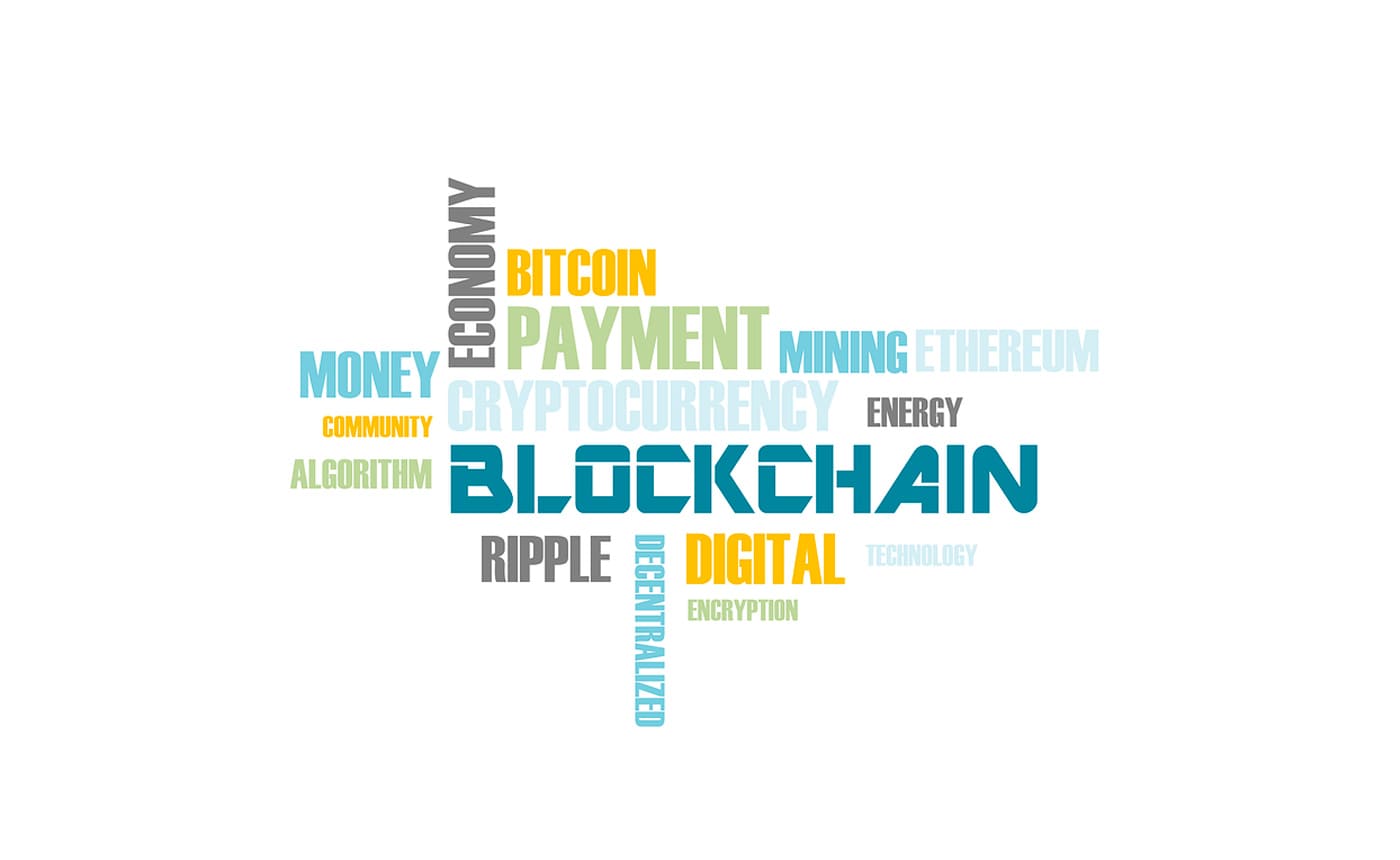There is much hype about cryptocurrency and blockchain concepts, yet there is even more confusion related to them. They remain a trending topic for several years, that’s why many people try to remedy their lack of knowledge searching “what is the blockchain?” It even comes to the point when some people cannot tell the difference between bitcoins and blockchains. Let us clear this mix-up and define what the blockchain technology is and how to use blockchain in various industries.
Simple Explanation of Blockchain
While blockchain is a complex technology, its structure may be brought down to a simple explanation. Basically, it comprises small chunks of data – blocks – linked sequentially in a database – a chain. For the sake of clarity, let’s be content with this definition for now, as the more detailed description of the blockchain architecture is presented further in this article.
A blockchain functions as a growing list of data records, most commonly – transactions. More precisely, the term blockchain refers to a particular type of distributed ledger technology, and it is no longer limited to transaction-related uses. Here is the trick: not all distributed ledgers are blockchains, but every blockchain is a distributed ledger. Cryptocurrencies, including Bitcoin, are one of the successful practical applications of blockchains. Thus, it is true that every cryptocurrency is a blockchain.

Blockchain Architecture and Work Principles
Any blockchain consists of a plurality of data blocks linked one by one, so one block contains both its own hash and the hash of the previous block. A cryptographic hash is a combination of letters and numbers and is built based on the data contained in a particular block, and so it is unique for every block. Yet, it is impossible to decipher the original data using its hash.
The average size of a block varies but generally stays within the range between 0,5 Mb and 1.3 Mb. The information contained in a block can be divided into three parts:
- Information that characterizes transactions, such as time and date when a transaction took place, and its monetary sum.
- Information about transaction participants in the form of digital signatures.
- A unique hash of the block.
This architecture means that changing data in one block requires altering all the subsequent ones. In particular, any change of information contained in one block leads to generating a new hash for it. In its turn, a changed hash in one block requires recalculating the hashes in all the subsequent ones.
Generally, blockchains are peer-to-peer networks that function as decentralized databases. In most cases they are open, so any changes within one network are visible to all its nodes. It is worth mentioning that not all blockchains are open and public. Some of them are private and require authorization in order to share data among participants.
In addition, a copy of the whole blockchain is kept in every computer of that network. This measure helps to implement a “crowd control” principle where it is extremely difficult to tamper with the data, and it’s even harder to do it and remain unnoticed.
Another crucial principle of blockchain operation is a “proof of work.” To contribute to a chain, users have to utilize the computational power of their devices and pass tests, for example, solve complex mathematical problems. While the execution of proof requires much time and energy, its result can be verified by other users with significantly less effort.
Cryptocurrencies, particularly Bitcoin, use hashcash as a proof-of-work system. The difficulty of work can be adjusted to control the rate of mining new blocks, keeping it preferably steady. The most popular hashing function used as proof-of-work in blockchains is SHA256d which creates the 256-bit hash values that contain 64 numbers and letters.
As you can see, the effective use of blockchains in some cases requires certain coding skills and understanding what is blockchain programming. Overall, knowledge of Python, Java, C++, Go, or other languages opens a new level of opportunities offered by blockchain software, such as writing Bitcoin miners or creating smart contracts.

Benefits of Blockchain Technology
Experts usually select the two most positive aspects associated with blockchains: data security and user identity protection. The security is ensured due to the combination of multiple means offered by a blockchain architecture and by contents of a block.
Every block includes a header with its timestamp, a hash of the previous block, and other data that makes data tampering very difficult and unfeasible. This structure, combined with the “crowd control” approach, prevents editing and/or removing information from a blockchain.
Below are three core characteristics that define the security of blockchains:
- Immutability. Data in a block cannot be altered after its creation.
- Transparency. All processes a chain are visible to all its participants.
- Autonomy. The data blocks are distributed and self-governed.
The combination of these features has the potential of increasing trust in relevant industries. In the concept, it is done by approving the validity of information by means of cryptography, eliminating the need for a trusted third party, such as banks.
Blockchains do not handle the participants’ personal information and utilize usernames and digital signatures. This way, they do not offer anonymity, as opposed to another popular opinion, but rather ensure pseudonymity.
Taking cryptocurrencies as an example, the confidentiality of users is provided by a pair of public and private keys generated in a unique fashion for every user account and stored in a corresponding digital wallet. In this pair, the private key functions as the digital ID of a particular user, and is hidden from everyone except him/her.
The public key is generated from the private key and acts as proof of the user’s digital ID. The combination of these two keys creates a digital signature of the said user. In its turn, the public key is used to generate the public address that functions similar to the bank account number of a user.

What is Blockchain Used for?
Blockchain systems provide numerous benefits with the great potential for implementation in various industries. However, due to the popularity of cryptocurrencies in the Darknet, there is a common belief that blockchains are used for illegal activities. While this misconception is based on true facts, the scope of crime associated with this technology is extremely exaggerated.
There are many more examples of legal applications of blockchain in several industries. In theory, any industry that requires secure data keeping and identity protection may benefit from blockchain use. The relevant implementations, both existing and contemplated, include the following:
- Secure payments, including digital currency. Bitcoin and altcoins have a significant impact on the global economy by providing a new type of valuable assets that can be mined and then traded on exchanges similar to natural resources. However, unlike natural resources, you can use cryptocurrency for various online payments. The whitepaper of Satoshi Nakamoto that explained the concept and laid the grounds for blockchain, Bitcoin, and other electronic cash of that type, was issued in 2008. During a decade of evolution, the idea of using a peer-to-peer network instead of financial institutions to provide secure payments gained the support of numerous enthusiasts. The initial concept took multiple paths of development resulted in the appearance of thousands of altcoins. According to Coinmarketcap, as of July 2019, there are over 2200 cryptocurrencies, both mineable and not, and this number is growing every day. Blockchain transactions are costless, meaning that trading parties do not have to pay a cut to the third party for performing and verifying a transaction. If realized in practice on a global scale, this approach would destroy the business models of every “middle-man” entity, like marketplaces or credit card companies.
- Smart contracts. Free transactions and other advantages provided by blockchain technology may find another beneficial use in specialized programs that automatically execute a code when certain predefined conditions are met, thus acting as simple contracts. The most notable platforms that offer smart contract functionality and relevant tutorials are IBM and Ethereum. In combination with secure payments, smart contracts may provide a beneficial environment for legal distribution of intellectual property, such as books, music, articles, etc. The micropayments would involve only two parties: an author and a consumer, cutting out intermediaries and transaction fees from the trading process. Smart contracts may also find implementation in renewable energy markets. They may help to create small energy grids that automatically sell excess “green” energy, for example, produced by solar panels in a neighborhood.
- Banking sphere, in particular performing transactions and safe storage of transaction data. Since blockchains function as secure ledgers with free transactions, they have a potential of revolutionizing banking industry that offers the same functionality but charges fees for banks’ involvement.
- Stock exchanges. There is a need to improve the chaotic and ineffective stock trading activity, and blockchains may provide the solution. In February 2019, the London Stock Exchange invested $20 million to the blockchain platform Nivaura. The platform is expected to reduce the time and costs required by the stock trading process by eliminating a customary chain of custody. It also encourages companies to issue their assets on a blockchain, and this practice is gradually gaining popularity. For example, in 2017, Daimler issued a €100 million corporate bond on a private Ethereum network to test new possibilities provided by blockchains.
- Ledgers that record and keep property rights . Not only this activity is time-consuming, frustrating, and requires tedious paperwork; it is also especially vulnerable to human error. Keeping property documents in a blockchain ledger enables verification and permanent secure storage.
- Supply chain management and other tracking and auditing applications, including shipping. Blockchains can reduce the paperwork associated with handling supply chains, cutting time and costs, and providing new levels of transparency and convenience. For example, all relevant documents may be exchanged in real time, and no data can be modified in an autocratic manner, without mutual consent. For these reasons, IBM and Maersk have formed a joint venture named “TradeLens” that utilize blockchain for maritime shipping. The advantages provided by this technology later helped the venture founders to convince two leading cargo carriers, Mediterranean Shipping Company and CMA-CGM, to join TradeLens despite their rivalry with Maersk.
- Keeping secure medical records in the healthcare industry. Decentralized storage of medical records enhanced with pseudonymity can increase the confidence of patients. Blockchains may ensure that patients’ personal data is prevented from tampering and is protected by a private key.
- Voting systems. In theory, blockchains may be of great help during elections because of highly necessary functions they provide. The voting system would be both transparent and secure, allowing users to verify that their votes are counted and correct. The decentralized data storage among numerous computers would complicate hacking the system and altering or deleting the election results. In addition, it may greatly improve convenience, increase people participation, and reduce organization load and costs by allowing voting via smartphones. Online voting was realized, for example, in West Virginia in 2018 and Denver in 2019 using Voatz platform . However, there are still many flaws and vulnerabilities that prevent using blockchain for matters of national security including voting systems. Due to numerous concerns, the National Academies of Sciences, Engineering, and Medicine advised against online voting as currently there is no technology able to guarantee its security.
Keep in mind that the list of possible practical implementation of the blockchain technology is far from complete, and other variants are contemplated but not described. As you can see, despite all the praise and hype, blockchain is a specialized technology rather than a versatile solution. This clarification means it may provide significant benefits in particular cases but cannot be effectively applied to all possible challenges and problems.

Risks of Blockchain
Opposite to the popular opinion, blockchain is not 100% hack-proof. In fact, it only takes 51% – that is the percentage of a blockchain network a hacker needs to override to gain control over it. While this malicious action requires a tremendous amount of mining/computing power, it is nevertheless possible. Also, newer blockchains have fewer blocks and, for this reason, are more vulnerable.
However, under certain conditions, hacking a blockchain merely requires smart use of a code. An illustrative example of such exploit is the infamous hacking of a distributed autonomous organization (DAO) on Ethereum in 2016. Using a loophole in the blockchain rules, the intruder managed to obtain about 3.6 million Ether without actually hacking the network.
High-security measures associated with blockchains can also pose a threat to users. If a user loses his private key, he cannot access his digital wallet, and there are no means to restore it using the corresponding public key or the public address. In addition, Bitcoin transactions are irreversible, so it is impossible to return the money sent to a wrong wallet unless the recipient of such incorrect payment willingly makes a refund.
Besides, use of blockchains may pose a global threat regarding the environment. According to the Cambridge Bitcoin Electricity Consumption Index, the whole Bitcoin network consumes over 60 TW of electricity per year – about as much as Switzerland or Czechia. Producing this tremendous amount of energy leads to equally large pollution and fuel consumption.
Conclusion
Blockchain is one of the most promising digital technologies that is yet to show its full potential. While its current realization is limited mostly to cryptocurrencies, its advantages make it desirable for numerous spheres, from fintech and healthcare to voting systems and shipment management. Basically, any industry that could benefit from transparent yet secure data storage, pseudonymity, and other perks of a distributed network, can be enhanced with the blockchain technology.
Light IT can offer you a specter of blockchain-enhanced solutions programmed for your particular needs. Our specialists will estimate your project and provide comprehensive consulting, so let’s cooperate!


